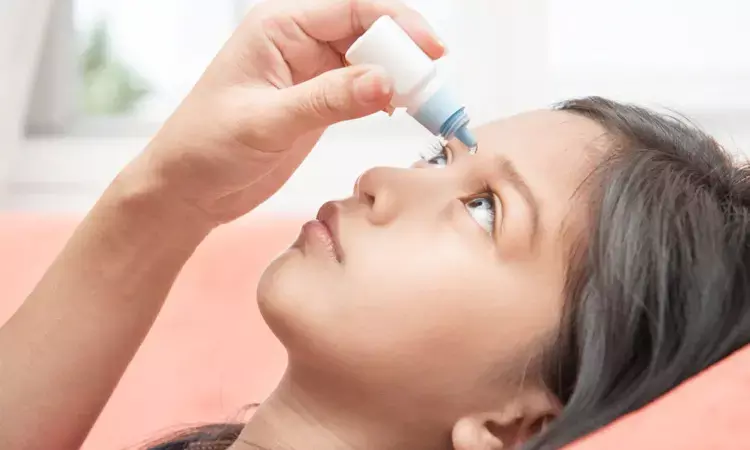- Home
- Medical news & Guidelines
- Anesthesiology
- Cardiology and CTVS
- Critical Care
- Dentistry
- Dermatology
- Diabetes and Endocrinology
- ENT
- Gastroenterology
- Medicine
- Nephrology
- Neurology
- Obstretics-Gynaecology
- Oncology
- Ophthalmology
- Orthopaedics
- Pediatrics-Neonatology
- Psychiatry
- Pulmonology
- Radiology
- Surgery
- Urology
- Laboratory Medicine
- Diet
- Nursing
- Paramedical
- Physiotherapy
- Health news
- Fact Check
- Bone Health Fact Check
- Brain Health Fact Check
- Cancer Related Fact Check
- Child Care Fact Check
- Dental and oral health fact check
- Diabetes and metabolic health fact check
- Diet and Nutrition Fact Check
- Eye and ENT Care Fact Check
- Fitness fact check
- Gut health fact check
- Heart health fact check
- Kidney health fact check
- Medical education fact check
- Men's health fact check
- Respiratory fact check
- Skin and hair care fact check
- Vaccine and Immunization fact check
- Women's health fact check
- AYUSH
- State News
- Andaman and Nicobar Islands
- Andhra Pradesh
- Arunachal Pradesh
- Assam
- Bihar
- Chandigarh
- Chattisgarh
- Dadra and Nagar Haveli
- Daman and Diu
- Delhi
- Goa
- Gujarat
- Haryana
- Himachal Pradesh
- Jammu & Kashmir
- Jharkhand
- Karnataka
- Kerala
- Ladakh
- Lakshadweep
- Madhya Pradesh
- Maharashtra
- Manipur
- Meghalaya
- Mizoram
- Nagaland
- Odisha
- Puducherry
- Punjab
- Rajasthan
- Sikkim
- Tamil Nadu
- Telangana
- Tripura
- Uttar Pradesh
- Uttrakhand
- West Bengal
- Medical Education
- Industry
Atropine and orthokeratology combo effective for control of childhood myopia, study finds

China: Combined treatment of 0.01% atropine and ortho-k slowed axial elongation by 0.18 mm more than that with ortho-k alone over two years in children with myopia, states a study report published in Contact Lens and Anterior Eye.
The global prevalence of myopia is increasing at alarming rates, especially in adolescents aged 16 to 18 years. A range of optical and pharmacological interventions have been investigated to limit childhood myopia progression. The use of atropine is effective but is associated with significant side effects during treatment and a strong rebound effect after discontinuation. Of the optical interventions for myopia control, orthokeratology (ortho-k) was ranked as the most effective in reducing axial elongation compared to wearing single-vision spectacles or soft contact lenses. Combination therapy (1% atropine and ortho-k) has been suggested as an approach to improve treatment efficacy in retarding axial elongation.
Qi Tan, The Hong Kong Polytechnic University, China, and colleagues conducted a 2-year randomized trial to investigate whether combining 0.01% atropine with ortho-k (AOK) has a better effect in retarding axial elongation, compared with ortho-k alone (OK) over two years.
Researchers randomized a total of 96 Chinese children aged six to < 11 years with myopia (1.00 – 4.00 D, inclusive) into either the AOK or OK group in a 1:1 ratio for the study. The AOK group was treated with instillation of one drop of preservative-free 0.01% atropine into each eye, 10 min before nightly wear of 4-zone ortho-k lenses while subjects in the OK group only wore ortho-k lenses nightly. Axial length (the primary outcome), and secondary outcomes (e.g. pupil size and choroidal thickness) were measured at 1-month and 6-monthly intervals after commencement of treatment.
Key findings of the study,
• There was significantly slower axial elongation in the AOK group than the OK group over two years.
• AOK subjects had a statistically larger increase in mesopic and photopic pupil size and greater thickening of the choroid than OK subjects
• Except for a higher incidence of photophobia in the AOK group, there were no differences in the incidence of any other symptom or adverse events between the two groups.
The authors concluded that axial elongation was slowed by 0.18 mm more with combined treatment than with ortho-k alone over two years. Enlarged photopic pupil size and greater choroidal thickening in patients in the combined treatment group may be contributory to the enhanced effectiveness of the combined treatment.
The combined treatment showed an additive effect and was well-tolerated by children with myopia. Further studies are indicated to explain the mechanism of this additive effect, the authors wrote.
Reference:
Qi Tan, Alex LK Ng, George PM Cheng, Victor CP Woo, Pauline Cho Open Access Published:May 31, 2022DOI:https://doi.org/10.1016/j.clae.2022.101723
BDS
Dr. Hiral patel (BDS) has completed BDS from Gujarat University, Baroda. She has worked in private dental steup for 8years and is currently a consulting general dentist in mumbai. She has recently completed her advanced PG diploma in clinical research and pharmacovigilance. She is passionate about writing and loves to read, analyses and write informative medical content for readers. She can be contacted at editorial@medicaldialogues.in.
Dr Kamal Kant Kohli-MBBS, DTCD- a chest specialist with more than 30 years of practice and a flair for writing clinical articles, Dr Kamal Kant Kohli joined Medical Dialogues as a Chief Editor of Medical News. Besides writing articles, as an editor, he proofreads and verifies all the medical content published on Medical Dialogues including those coming from journals, studies,medical conferences,guidelines etc. Email: drkohli@medicaldialogues.in. Contact no. 011-43720751


